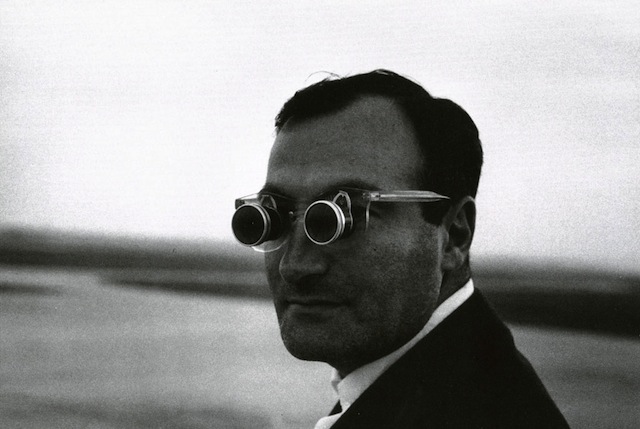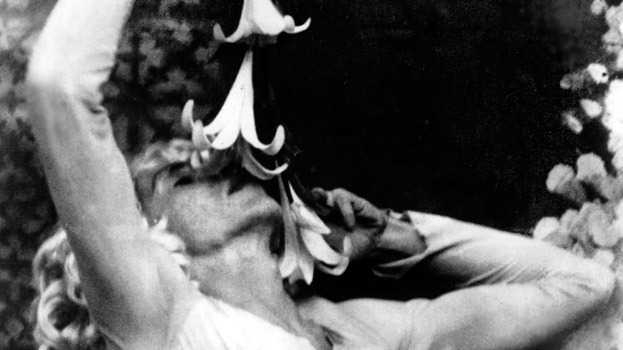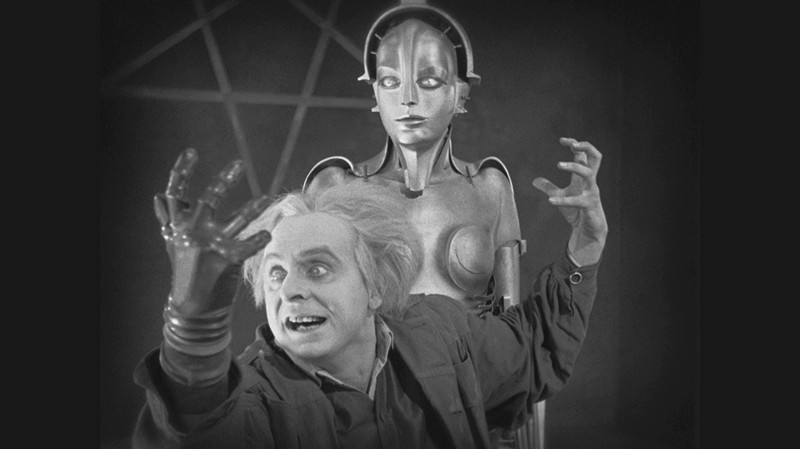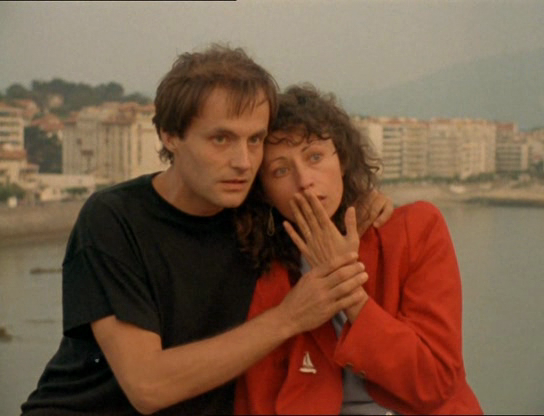6. Goodbye to Language

Jean-Luc Godard revolutionized cinema more than once; however, the most radical film in his oeuvre is “Goodbye to Language.” There is a sense that this is the farthest anyone has attempted to go in this current era of cinema that seems to be propelled by new technology. The use of 3D in this film allows for the audience to cut between the shots with their eyes, since a different image is received by each eye.
However, one of the best scenes that suggests this epic blockbuster style is condensed into a much more personal and idea-based cinema is a scene in the beginning. The one where the teacher discusses the old use of the thumb, with Godard cutting to black, and then to the way people currently use thumbs is a match cut as startling as the one in 2001.
However, Godard’s match cut is different because the cut is between an idea and the exact opposition of that idea, which spans only a few decades, representing the black. This makes Godard’s match cut all the more startling, as well as revealing in terms of the way this three-shot match cut manages to encapsulate the abrupt changes the world is making in the 21st century.
“Goodbye to Language” is Godard making an epic film in terms of ideas that are based purely in the image with the new technology that is used so frequently in blockbuster epics. However, Godard manages to dismantle these epics and prove that all anyone needs to be a filmmaker is daring ideas and the right technology to realize these ideas.
7. La Jetee

Chris Marker made the definitive time travel film while also radically changing film grammar. This all began during Marker’s childhood, when he made a flipping picture cartoon of a cat that he called a movie, but another child insisted that it wasn’t a film because it was just pictures. This is presumably the root of the idea behind “La Jetee” as well as the idea of a man being obsessed with the image of a women, which is the central idea behind Marker’s favorite film Alfred Hitchcock’s “Vertigo.”
These are the ingredients that Marker combined to create a film that captured the underlying threat of nuclear war during the Cold War, as well as this human desire that exists within the audience as well as the characters of the film to freeze time and just live in the moment.
The major scene in ”La Jetee” that illustrates this best is the only scene that includes a video clip, which happens when the camera, presumably from the point of view of the main character, looks at the girl. The shots then begin to cut between stills of her in bed, but then the clarity of life emerges from these stills as the girl looks at the camera and blinks.
Marker seems to be suggesting with this scene as well as the ending that the only way to live within the moment isn’t by freezing it, but by continually moving forward and accepting each moment as it happens.
8. Flaming Creatures

Of all the underground films from the 1960s and 1970s, Jack Smith’s “Flaming Creatures” managed to capture the perfect expression for the decay of the old Hollywood system that produced the large screen epics that he was obsessed with when he made it.
Smith fills the film with two scenes that are typical to an extent in these Hollywood films that he loved, and has one scene that completely obliterates the mise-en-scene of every film that came before it. The beginning and ending of the film are familiar scenes that are a mixture of homage and satire: both in love with these types of scenes as well as pointing out the insincerity of scenes like these in films.
However, it is the middle scene, known as the orgy scene, that captures the revolutionary mise-en-scene with the camera, showing a multitude of people and their individual body parts rather than them as a whole in each scene, creating an abstraction of parts that reaches the climax here. This abstraction manages to capture the same ambivalence of the opening and closing scenes, but with an ecstasy that is missing from those other two scenes.
Smith managed to capture both a celebration of Old Hollywood as well as its decay, and even push past the limits of it and capture the underlying emotions of sincerity and insincerity that he loved about these old Hollywood films.
9. Metropolis

Fritz Lang’s “Metropolis” is comparable to “2001: A Space Odyssey” in only two ways: both revolutionized special effects and both are incredibly ambitious projects that tried to shed light on the problems society will be facing in the future. However, the biggest difference between the films is their deployment of mise-en-scene, which is reflective of the different themes in the films. Where “Metropolis” is concerned about human relations, “2001” is interested in human relationships with the universe.
The best example of the ambitious mise-en-scene in “Metropolis” is the beginning that displays the city and the arrangement of people according to their social class, which is then reflected in the title cards with the way they move in accordance to the social position of where the scenes are taking place.
Lang used everything he could to illustrate the great divide between the upper class and the lower class, which points to the fact that there is no middle class in this film, as is assumed through the void Lang creates between the classes.
Lang is often at his best when he manages to create a void of information that the audience is forced to assume, which is also to say that this void of information that is built on the assumptions of the audience. Lang’s creation of the absence of style is a style itself, which forces the audience to participate in a way few films do.
10. The Green Ray

Eric Rohmer started off as a writer, which explains his novelistic approach to filmmaking as well as the literary allusions found in his films. “The Green Ray,” which shares the title with a Jules Verne novel, is essentially a film where an aimless woman in her 20s walks around Europe over the summer, feeling like an outcast in society.
The outcast status held by Rohmer’s main character Delphine is similar to outcast status shared by Nicholas Ray’s characters, which is only to point out a certain affinity between the loneliness of Ray’s characters and the loneliness expressed by Delphine.
This loneliness is seemingly the guiding force behind the plot of “The Green Ray,” which is where the film creates the revolutionary storytelling of the French New Wave, while taking it a step further in the exploration of the philosophical themes explored through the use of 16mm.
Rohmer was inspired to do this because he wanted to add a documentary feel to the film. It is both through this choice of 16mm and improvisational dialogue that the essence of the characters are captured, while also furthering the plot.
This had been done before Rohmer even by Rohmer himself. However, the biggest difference between “The Green Ray” and the rest of Rohmer’s oeuvre is the way the 16mm grain and the improvisational dialogue create a realistic impression that also manages to capture magic in every frame, which climaxes in the final moments of the film.